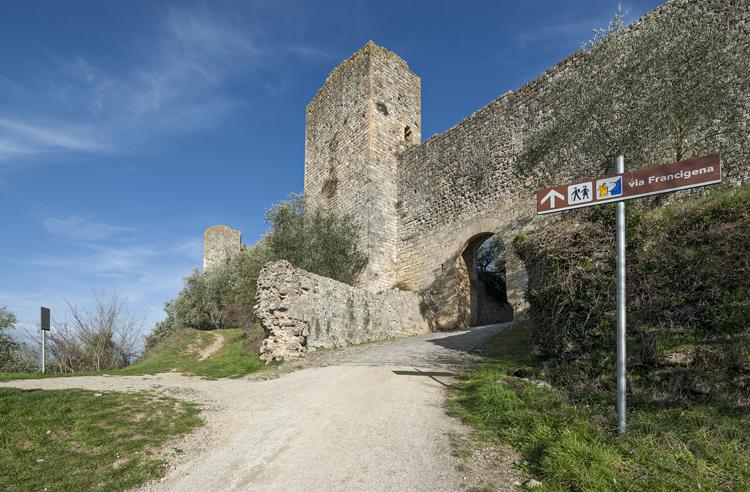The Tuscan stretch of the Via Francigena, the ancient road and pilgrim route beginning in Canterbury, England, and ending in Rome, is filled with picture-perfect Tuscany moments: from the beaches of Versilia to art cities like Lucca and Siena to the vineyards and historic hamlets of the countryside, walking the Via Francigena in Tuscany means experiencing the best of the region in a deeper, slower, more intimate way.
In the Middle Ages, the Via Francigena was the major pilgrimage route to Rome from the north of Europe. Today, it is used by modern-day ‘pilgrims’ who appreciate the chance to discover the world on foot.
The Tuscan stretch of the Via Francigena begins at the Cisa Pass, a mountain pass that divides the Ligurian and Tuscan Apennines, and ends at Siena. It takes eleven days to complete, with an average walking time of six and a half hours and a daily mileage that varies from 15 to 35 kilometers, on trails, as well as dirt and paved roads; you will walk wild stretches, pass by chestnut trees, cypresses, little-known ancient villages, and along the banks of rivers crossed by stone bridges that date back to the Middle Ages, when they were built to help pilgrims proceed on their way to St. Peter’s Basilica in Rome, where the route still ends today.
Some of the places touched by the itinerary include the Lunigiana, a mountainous area traversed by the Magra river, with views of the Apuan Alps and the Apennines, and the archeological site of Luni, an ancient Roman port; lovely Lucca, with its well-preserved Renaissance walls and cobblestone streets; picturesque San Miniato, located on top of three small hills dominating the lower Arno Valley; the Val d’Elsa, rich with castles, abbeys and fortresses; San Gimignano, Monteriggioni, and finally Siena.
For more information, visit the Vie Francigene website.










